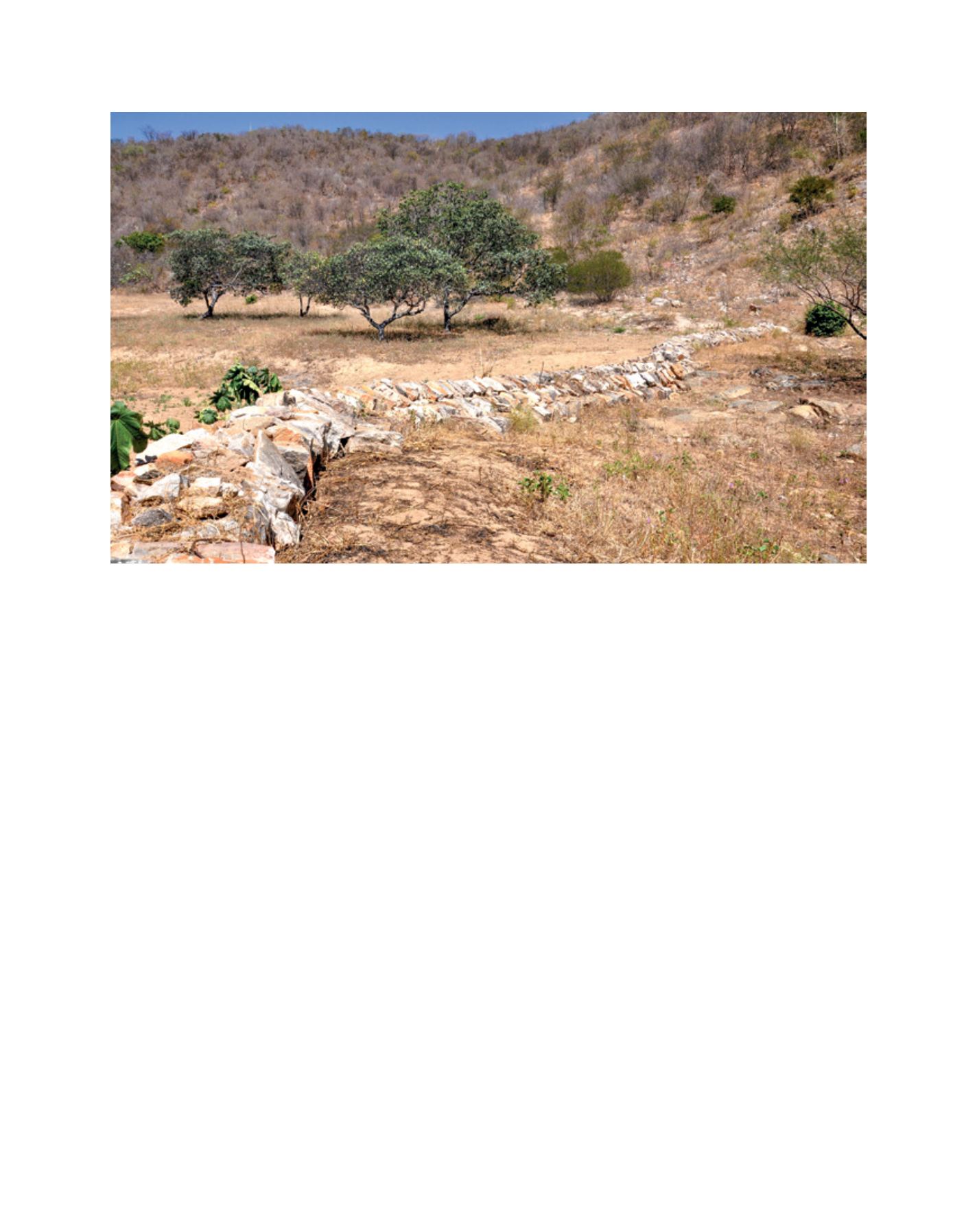

[
] 34
Water access
In the Brazilian backlands better access to water is promoted,
in particular, through improving the storage of water in the
soil and maintaining the vegetation cover. These objectives
are reached through technologies such as:
• Retention terraces — transversal channels built in the
direction of the declivity of the terrain, reducing the
speed of the flood and its destructive potential on the soil.
• Contour stone barriers — applied on small farms, in areas
where the use of agricultural mechanization is difficult.
These also reduce the volume and speed of floods.
• Successive sediment containment barriers — structures
built with loose stones in small inflowing rivers or
streams, with the objective of retaining the sediments
generated by erosion in cultivated areas.
• Underground dams — the use of a plastic canvas in the
underground to create a barrier that will prevent the
accumulated water in the soil continuing to flow during
the dry season. Such underground water reservoirs are
therefore used as a moist substrate for growing crops and
as a support for water supply.
• Sustainable forest management — the planned use of
forests, allowing for natural regeneration. It protects
the soil and ensures the conservation of species and of
vegetation cover. The planned use of dry forests allows for
taking advantage of their forage for cattle farming, as wells
as providing sustainable and legalized forest biomass to
meet energy demands and enhancing the use of non-timber
species. Other positive outcomes are favouring beekeeping
and better regulating the water supply.
Besides the above-mentioned technologies, the construction
of cisterns based on the traditional knowledge of the local
population has positively affected the lives of more than 4
million poor people in the semi-arid area. Cisterns are a low-
cost technology, which allows for the capture and storage
of rainwater. The implementation of cisterns is funded and
coordinated by the Federal Government in partnership with
civil society organizations, state and local governments.
Since 2003, over 1.2 million cisterns have been built. Labour
is chosen preferably within the local community, lowering
costs and generating job opportunities. Beneficiary families
and bricklayers are trained both for the construction and for
the proper use of correspondent technology. Each cistern is
monitored for the assessment of its results.
Increasing access to water in this region generates profound
changes in the lives of families: it reduces the incidence of
diseases and liberates women and children to other activities.
This experience strengthens the enormous capacity of local
dwellers to cope with the hardship of the Sertão. In addition,
it releases families from dependence on tank trucks and other
forms of political patronage.
Overcoming extreme poverty
Food security is recognized as one of the top priority issues for
Brazil. Initially, with the Zero Hunger Programme and later
with the main Brazilian conditional cash transfer programme
— called ‘Bolsa Família’ — Brazil managed to consider-
ably reduce extreme poverty. Currently the Bolsa Família
programme reaches 14 million households. Public sponsor-
ship for the construction of cisterns is specifically devoted to
Image: João Vital
Successive sediment containment barriers, ensuring water retention in the soil and a productive environment
L
iving
L
and
















